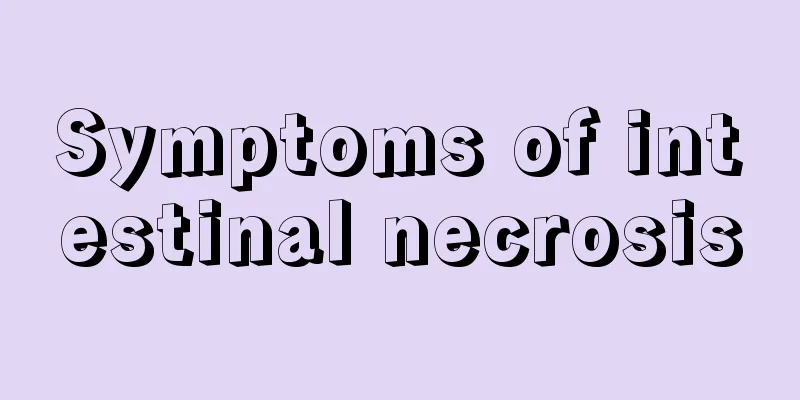Symptoms of intestinal necrosis

|
No matter which part of the body has problems, there will be corresponding symptoms. So what are the symptoms of intestinal necrosis? Once you suffer from intestinal necrosis, the first symptom is diarrhea, followed by nausea and vomiting. Of course, the stomach pain will also be more severe. If it is very serious, blood in the stool will occur. You should seek medical treatment immediately and do not let the disease continue to develop. 1. Symptoms of intestinal necrosis 1. Nausea and vomiting It often occurs simultaneously with abdominal pain and diarrhea. The vomitus may be yellow water, coffee-like or bloody, and may also contain bile. 2. Symptoms of intestinal necrosis 2. Abdominal pain The onset is acute, with sudden abdominal pain, which is often the first symptom, mostly around the navel. At the beginning of the disease, it is often manifested by gradually worsening paroxysmal colic around the umbilicus or in the upper and middle abdomen, which then gradually turns into persistent pain in the entire abdomen with paroxysmal worsening. 3. Symptoms of intestinal necrosis 3. Diarrhea and blood in the stool Diarrhea may occur after abdominal pain occurs. The stool is initially paste-like and contains feces, then gradually becomes yellow water-like, followed by white water or red bean soup and jam-like, and may even be blood-like or dark red blood clots. The stool is small in size and has a foul odor. No tenesmus. The amount of bleeding varies. In mild cases, there may only be diarrhea, or only positive fecal occult blood without blood in the stool; in severe cases, the amount of bleeding can reach hundreds of milliliters a day. Diarrhea and bloody stools may last as short as 1 to 2 days or as long as more than a month, and may occur intermittently or repeatedly. Severe diarrhea may lead to dehydration and metabolic acidosis. 4. Symptoms of intestinal necrosis 4. Abdominal signs Relatively few. Sometimes there may be abdominal distension and intestinal pattern. There may be obvious tenderness around the umbilicus and upper abdomen. Bowel sounds may be hyperactive in the early stages and then weaken or disappear. 5. Symptoms of intestinal necrosis 5. Systemic symptoms After the onset of the disease, systemic symptoms such as general discomfort, weakness and fever may appear. The fever is generally between 38 and 39°C, and may reach 41 to 42°C in a few cases. However, the fever usually subsides within 4 to 7 days, and it is rare for the fever to last for more than 2 weeks. |
<<: Symptoms of lumbar spondylolisthesis
Recommend
What kind of bacteria will be present if you raise birds
Many people like to raise birds when they have a ...
There is a certain connection between dietary factors and the occurrence of prostate cancer
There is a certain relationship between dietary f...
Do you have these cancer precursors?
Cancer is a disease that is as scary as a demon, ...
Prevention and treatment of cerebral infarction
Cerebral infarction is a relatively serious brain...
Exercise methods for early stage rectal cancer
What are some early exercise methods for rectal c...
What is the cause of black blood clots during menstruation
Vaginal health of women is very important because...
What is the reason for a burning sensation at the urethra?
Due to its location, the urethra is prone to accu...
Five tips to keep your brain evergreen
Nowadays, many parents will exercise their childr...
Choosing the right brain cancer treatment method can effectively cure it
Brain cancer has always been a headache for peopl...
How is lung adenocarcinoma caused? Pay attention to these points
Lung adenocarcinoma is also a type of lung cancer...
What's wrong with toes turning outward
Toe valgus is a common problem in life, which has...
How to use the ox horn scraping board
Gua Sha is a traditional Chinese medicine health ...
How to do a self-examination for bone cancer
How to conduct self-examination for bone cancer? ...
How to prolong the life of testicular cancer patients
Due to the frequent occurrence of various disease...
What is the reason for calf soreness
After regular running exercises, the calves are p...









